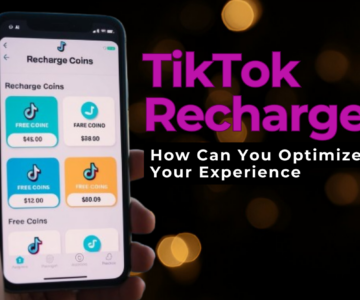 The Secrets of Space: Fascinating and Unknown Factsby admin / July 10, 2024
The Secrets of Space: Fascinating and Unknown Factsby admin / July 10, 2024The Complex Relationship Between Spotify and Music Royalties: What Every Music Lover Should Know
Spotify – Revolutionizing Music, But at What Cost?
Spotify has undeniably transformed the way we consume music. Offering millions of tracks at our fingertips, it has become a go-to platform for music lovers worldwide. However, behind this seamless access to music lies a contentious issue: music royalties. How exactly does Spotify compensate artists, and what are the implications for the music industry? Let’s explore these questions in detail.
How Spotify’s Royalty System Works: The Basics
Spotify uses a pro-rata model to distribute revenue generated from its premium subscriptions and advertisements. Here’s a step-by-step breakdown of how this system works:
- Revenue Pooling: Spotify collects money from premium subscriptions and advertisements. This combined revenue forms a single pool.
- Stream Calculation: The total number of streams on the platform for a given period is calculated.
- Pro-Rata Distribution: Revenue is distributed based on the proportion of total streams that each artist’s music received. If an artist’s songs account for 1% of all streams, they receive 1% of the revenue pool.
Pros:
- Unlimited Access: Users can stream an extensive library of songs without additional cost per song.
- Global Reach: Artists can gain exposure to a global audience, potentially reaching millions of listeners.
Cons:
- Low Per-Stream Payout: On average, Spotify pays between $0.003 and $0.005 per stream. This means an artist would need millions of streams to earn a substantial income.
- Earnings Disparity: Top artists, who dominate the streaming charts, earn the majority of the revenue, leaving less for emerging or niche artists.
The Reality of Earnings: Do Artists Make Enough?
The low per-stream payout is one of the most significant criticisms of Spotify’s royalty model. Here’s a closer look at how much artists actually make:
Breakdown of Earnings:
- Spotify’s Cut: Spotify takes a significant portion of the revenue to cover operational costs and profits.
- Record Labels: For artists signed to record labels, the labels take a large cut before the artists see any money.
- Artists: Finally, artists receive their share, which can be quite small after all deductions.
Case Studies:
- Independent Artists: These artists often rely solely on their streaming revenue. Without the backing of a record label, they retain a larger percentage of their earnings but may struggle to achieve high streaming numbers.
- Major Label Artists: These artists typically see higher streaming numbers due to better marketing and promotional support. However, they also share their revenue with their record labels, often resulting in a smaller percentage of the total revenue.
For instance, an independent artist might earn around $4,000 for a million streams, while a major label artist might earn significantly less per stream due to the label’s cut, despite having higher overall streams.
Controversies and Criticisms: Artists Speak Out
Spotify’s payment model has sparked significant backlash and criticism from the artist community. Here are some key points:
Protests and Boycotts:
- Taylor Swift: In 2014, Taylor Swift removed her entire catalog from Spotify, arguing that streaming services undervalue her music. She returned in 2017, but her protest brought significant attention to the issue.
- Radiohead’s Thom Yorke: Described Spotify as “the last desperate fart of a dying corpse,” highlighting the frustration among artists regarding low payouts.
Legal Battles:
- Wixen Music Publishing Lawsuit: In 2017, Wixen Music Publishing sued Spotify for $1.6 billion, alleging that Spotify was using thousands of songs without proper licenses. The case was settled in 2019, with Spotify agreeing to pay undisclosed damages.
Artists argue that while Spotify provides a platform for their music, the compensation they receive does not reflect the true value of their work. Many feel that the current model disproportionately benefits the platform and the top-tier artists, while leaving lesser-known musicians struggling to make ends meet.
Seeking Solutions: Towards Fairer Compensation
In response to growing criticism, several alternative models and solutions have been proposed to ensure fairer compensation for artists:
User-Centric Payment System:
- Concept: Under this model, the subscription fees paid by each user would be distributed directly to the artists they listen to, rather than being pooled.
- Potential Benefits: This could lead to a fairer distribution of revenue, as artists would be paid based on actual listening habits of their fans rather than overall platform usage.
Direct Artist Payments:
- Platforms like Bandcamp and Patreon: These platforms allow fans to directly support their favorite artists through purchases, subscriptions, and donations.
- Fan Engagement: By allowing fans to directly contribute, artists can build a more engaged and supportive community, potentially leading to more sustainable income.
Industry Movements:
- Artist-Led Initiatives: Some artists are exploring independent releases and using platforms that offer better compensation.
- Legislative Changes: Advocating for changes in copyright law to ensure that streaming platforms pay fair royalties.
By adopting these alternative models, the music industry can move towards a more equitable system that better compensates artists for their work.
The Bigger Picture: Impact on the Music Industry
Spotify’s royalty model has significant implications for the broader music industry:
Impact on Independent Artists:
- Financial Struggles: Many independent artists find it challenging to earn a living solely from streaming revenue, often needing to supplement their income through live performances, merchandise sales, and crowdfunding.
- Creative Constraints: To achieve higher streaming numbers, some artists feel pressured to create music that caters to popular trends rather than exploring their unique sound.
Changing Landscape of Music Production:
- Focus on Singles: With the emphasis on streaming numbers, many artists focus on releasing singles rather than full albums, as singles tend to perform better on streaming platforms.
- Shorter Songs: There’s a trend towards shorter songs, as artists aim to maximize the number of streams and adapt to listeners’ shorter attention spans.
Future Trends and Predictions:
- Innovation in Streaming Models: As debates continue, we might see new streaming platforms and models emerge that prioritize fair compensation.
- Increased Transparency: Calls for greater transparency in how revenue is distributed could lead to more artists understanding and advocating for their rights.
- Diversification of Revenue Streams: Artists are likely to continue diversifying their income sources, leveraging direct fan support, live performances, and merchandise.
Conclusion: Striking a Balance
Spotify has revolutionized music consumption, making it easier than ever to access a vast array of music. However, the royalty debate highlights significant challenges in ensuring fair compensation for artists. Finding a balance between providing affordable music access and ensuring artists are fairly paid is crucial for the future of the industry.
As the music landscape continues to evolve, ongoing dialogue, innovation, and legislative changes will be essential to address these complex dynamics. By supporting fairer models and advocating for transparency, we can help create a music industry that benefits both artists and listeners.



